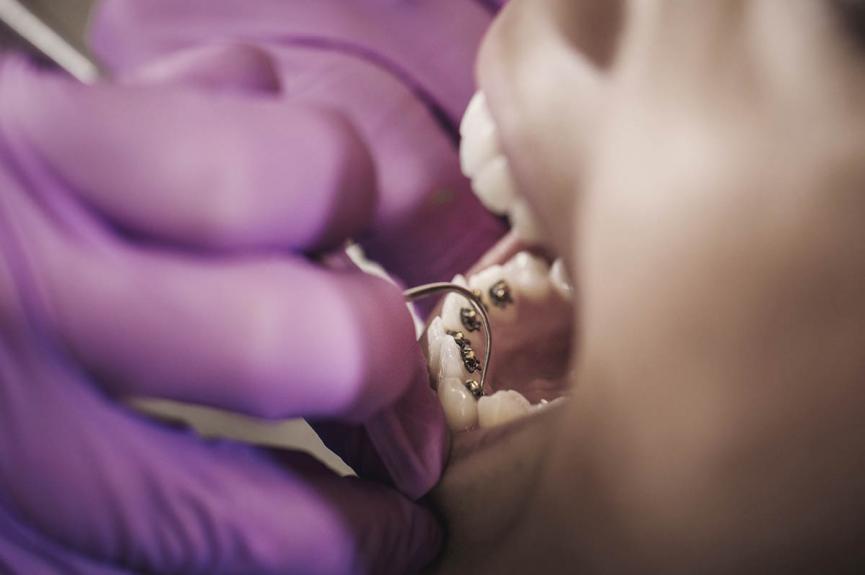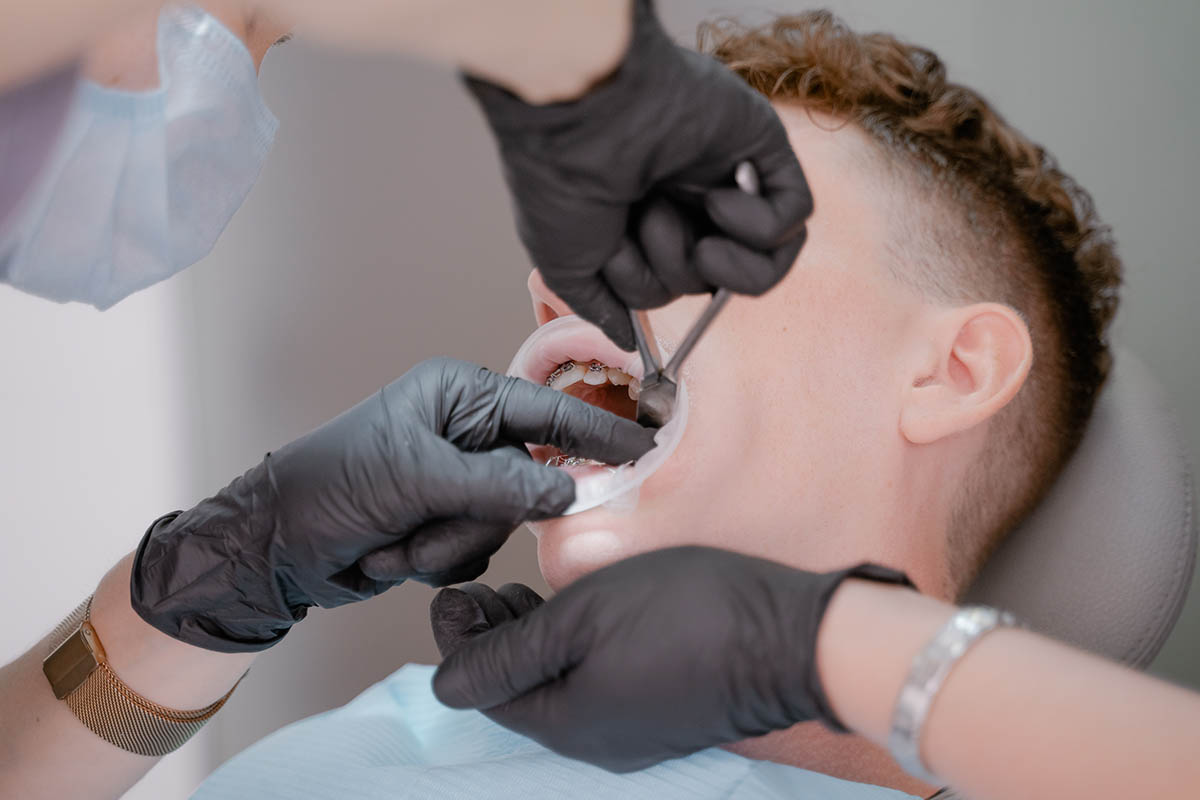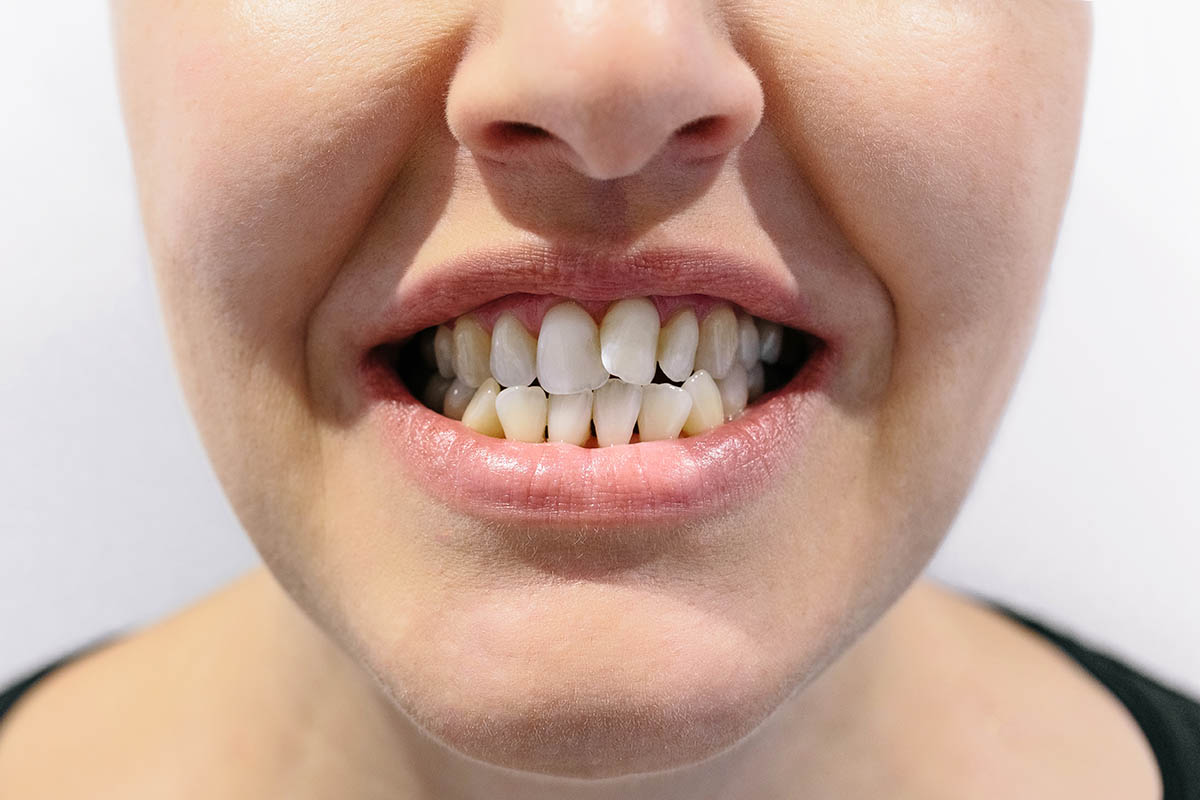
Braces are a great solution for both adults and children who are having difficulties with the positioning of their teeth or their bite. Even so, while most kids do not have a problem wearing visible devices, most adults are concerned about it. Fortunately, orthodontic dentistry offers a great cosmetic alternative to traditional braces known as lingual or invisible braces.
Here, you can learn all you need to know about these invisible devices - from what conditions they are best suited for, to their benefits and disadvantages, to their average cost in the US. We hope this information will prove useful to you and help you decide whether lingual braces are right for you.
What are lingual braces?
Lingual braces are kinds of braces that go on the internal surface of teeth which is why they are known as invisible braces. In the same way as other orthodontic appliances, they are used primarily to treat misaligned or crowded teeth, as well as other issues associated with the jaw.
Lingual braces are not the only type of braces on the market that offers invisibility. Other appliances with this feature include ceramic braces and clear aligners. Their difference is that they are placed on the front teeth but their colour is similar to the tooth's colour, making them less noticeable.
What makes lingual braces unique is that they are a completely invisible option. Although this really sounds amazing you need to understand that these appliances are not for everyone. They do not come without drawbacks either, just like any other type. Later in this article, we will explore this topic in greater detail.
What is the purpose of lingual braces?
The main purpose of these appliances is to help you achieve straight teeth or improve jaw alignments. The lingual braces work best for the following dental conditions.
- Crooked or crowded teeth. Misaligned teeth are one of the most common problems that make people undergo braces treatment. The condition affects not just the aesthetic appearance of the smile but the health of the teeth as well. Overcrowding makes it difficult to clean your teeth, which makes them more prone to dental disease. Lingual brackets can help patients straighten their teeth and improve the health and appearance of their mouth.
- Crossbite. In this condition, the lower teeth cover some of the top teeth when you are biting or vice versa, the upper teeth cover the lower ones. This can cause a lot of teeth and jaw problems. Lingual appliances work especially well in correcting such an issue.
- Underbite. It is when the lower jaw appears slightly forward than the upper jaw. This condition also responds very well to lingual braces treatment.
Lingual orthodontic appliances usually provide very good results. In some cases, they might be the more effective method of alignment than traditional braces.
Are lingual braces expensive?

Typically, lingual braces are quite expensive. They can cost you over $10000, which is a significant increase over traditional metal braces and ceramic braces. You should be aware that the price of this treatment may differ depending on the country where you live and the provider you choose.
But why is actually lingual braces treatment so expensive? First of all, not all orthodontists provide lingual braces services. The placement of these appliances requires special training in lingual orthodontics.
In addition, lingual braces are made with more expensive materials than regular braces. The dentist will also make sure that the trays are customized according to your specific needs, which ultimately leads to additional costs.
Another factor contributing to the higher price of lingual appliances is the possibility of longer treatment duration compared to conventional braces.
In order to save money on the cost of lingual braces, you can look into different financing options rather than paying for it all out of your own pocket. Make sure you check the options available in your country.
In addition, you may wish to discuss with your orthodontist whether they can arrange a payment plan for you, such as monthly payments. Most of them will do so.
How much do lingual braces cost in the United States?
The cost of lingual braces in the US can be anywhere between $8000 and $13000. There are a number of factors that determine how much this treatment will cost, including the complexity of your dental problems, the length of your treatment and the number of visits required, as well as the orthodontist and clinic you select.
Is the treatment covered by Insurance?
You can have your braces treatment covered by your dental insurance. This will depend on the specific plan you hold since every dental insurance company has its own requirements. It might be possible for you to receive a payment of about 30-40% of the overall cost. Make sure to discuss it with your dentist.
How are lingual braces applied?
Getting lingual braces consists of various steps including an examination, preparing the teeth and mouth, placing the appliances, monitoring of the results, and removing the braces.
In the first instance, your orthodontist will perform a thorough examination of your teeth and mouth. The exam usually involves taking both 3D scan images and X-rays. Based on your results, the dentists will create a treatment plan tailored to your needs.
The next step usually takes place on a separate visit. This is when the lingual braces are actually placed. This process involves:
- Cleaning and etching of teeth
- Adding a primer to the braces and teeth
- Applying glue to the device
- Putting the tray in place (all the brackets are placed at the same time)
- Using UV lights to cure the glue
- Removing the tray while leaving the braces behind
- Taking off any remaining glue
- Attaching the wires to the top and bottom.
The doctor will usually schedule a checkup every four to six weeks. During these visits, the dentist will monitor your progress. Once you reach the desired result, your lingual braces will be removed.
Advantages of lingual braces
- They are more aesthetically pleasing. Lingual braces differ from ceramic braces and metal braces in that they are hidden behind the teeth, making them completely invisible. A lingual brace is ideally suited for anyone seeking more discreet braces treatment.
- They deliver excellent results. Even though they are placed on the inside part of the teeth, lingual braces work similarly to traditional braces. They have the same benefits since they are fixed braces that are always attached to your teeth. Lingual braces can sometimes prove to be a more effective solution for straightening teeth compared to traditional ones.
- Lingual braces work well on more complex cases. These braces are excellent for treating more complicated cases. They are particularly good for treating crossbites and underbites.
- These are completely custom-made devices. Your orthodontist will make sure that you get customized lingual brackets by using computer-aided design and computer-aided manufacturing. This way your new appliances will fully meet your needs and help you achieve your desired results.
- They are smaller in size. When wearing lingual braces, you won't feel like your teeth are bulging like you would with traditional braces.
Disadvantages of lingual braces
- It is uncomfortable to wear them. A major disadvantage of lingual braces is that they are placed behind the teeth, making them very uncomfortable to wear. It is because they actually touch the tongue quite frequently. You'll need some time to learn how to position your tongue properly so that it doesn't get irritating.
- You may have difficulty speaking. As lingual braces are behind your teeth, they can affect your speech as well 1. Most patients experience such difficulty during the first few weeks. However, the condition is temporary and you will learn how to speak as time passes.
- It might be harder to maintain good oral hygiene. Wearing lingual braces increases your risk of getting food stuck in your teeth since the brackets are positioned closer together. It makes lingual braces more difficult to clean as well. It is essential that you brush your teeth properly. A water flosser may also be quite effective at maintaining good oral hygiene.
- The cost is higher. Lingual braces tend to be quite expensive. This is because they should be completely custom-fitted and their application on teeth is more complex. In addition, the treatment with lingual braces normally lasts longer compared to traditional braces.
Who Should Get Lingual Braces?

Lingual braces are ideal for adults or teens who want to straighten their teeth and fix their smiles without this affecting their social life and confidence. These devices offer complete invisibility and great results. However, lingual braces may not be suitable for everyone.
Prior to receiving them, it is important to consider several factors, including:
- What price is acceptable for you? There are quite a few costs associated with lingual braces. They are definitely not the right choice if you want to get braces at an affordable price.
- They are often uncomfortable to wear and lead to speech changes. Lingual braces may cause irritation and pain to the tongue and cheeks. Many patients need time to adjust to them. Based on current research, however, the pain and discomfort levels appear to be similar than to traditional braces 2.
- Your oral care habits. They are suitable for people with excellent oral hygiene.
Your orthodontist can let you know if you are a good candidate for lingual braces by a comprehensive exam, taking records including x-rays, and a visual examination of your mouth and bone structure.
Frequently asked questions
How long do lingual braces last?
The treatment with lingual braces can last anywhere between one and two years. Each patient will require a different length of time to complete this orthodontic treatment. The dentist will usually tell you how long you will need to wear your braces during your consultation.
How long does it take to adjust lingual braces?
For your first time, it may take around two to three weeks to get adjusted to them. You will have an easier adjustment period if your doctor ensures that you received fully customized brackets.
Do lingual braces push teeth out?
The lingual appliance uses brackets and wires that put pressure on your teeth. Thus, their periodontal membrane stretches and compresses, causing the teeth to loosen. The new bone will then form around the teeth, allowing them to remain in their new position. This process is known as bone remodelling.
Do lingual braces fix overbites?
In some cases, lingual braces can treat overbite since they apply pressure to the teeth. However, they might not provide satisfactory results when applied to patients with deep overbites.







